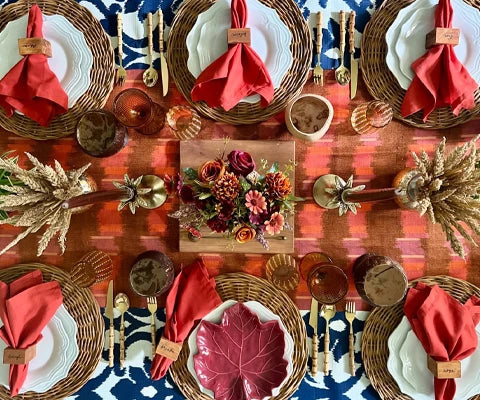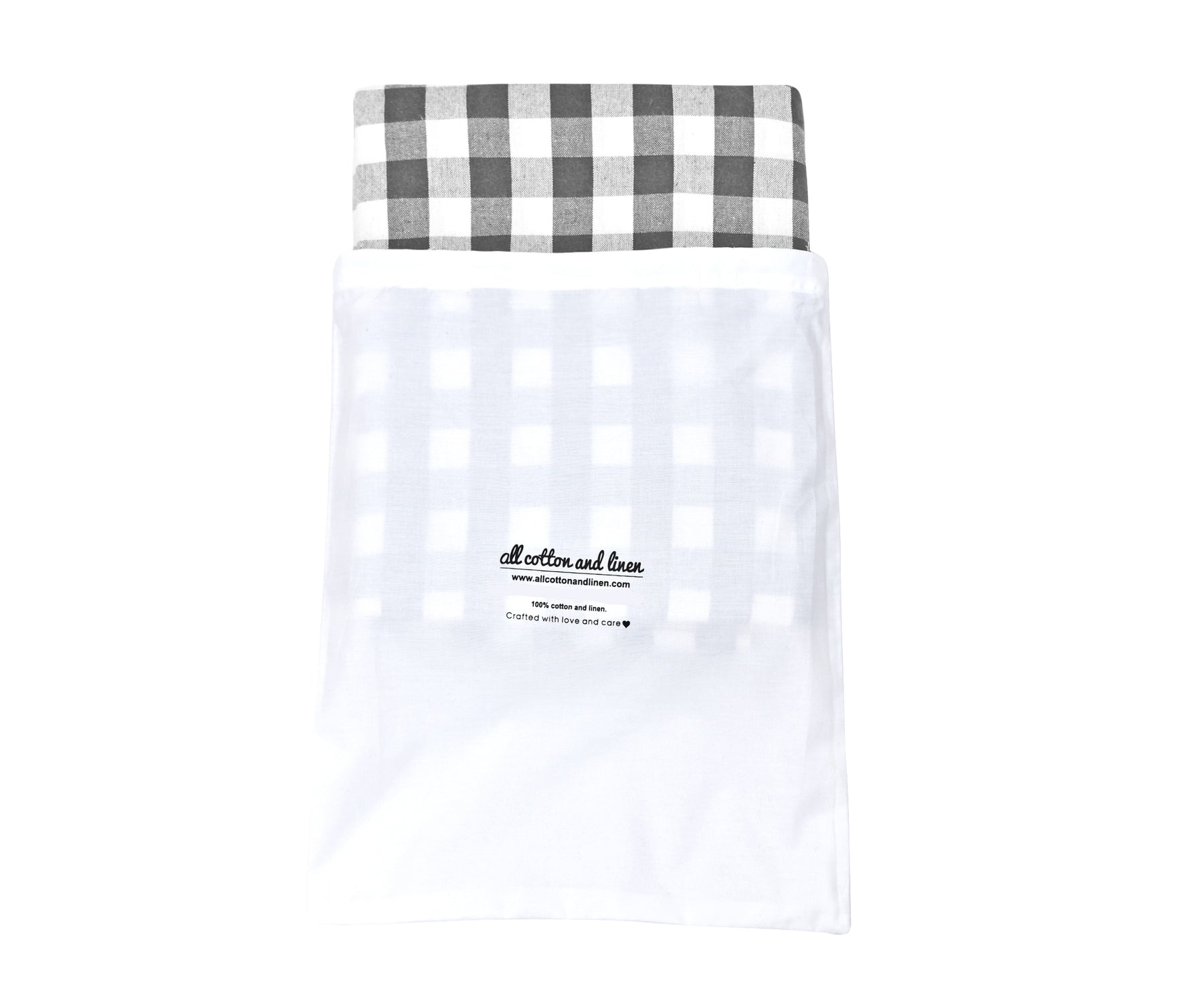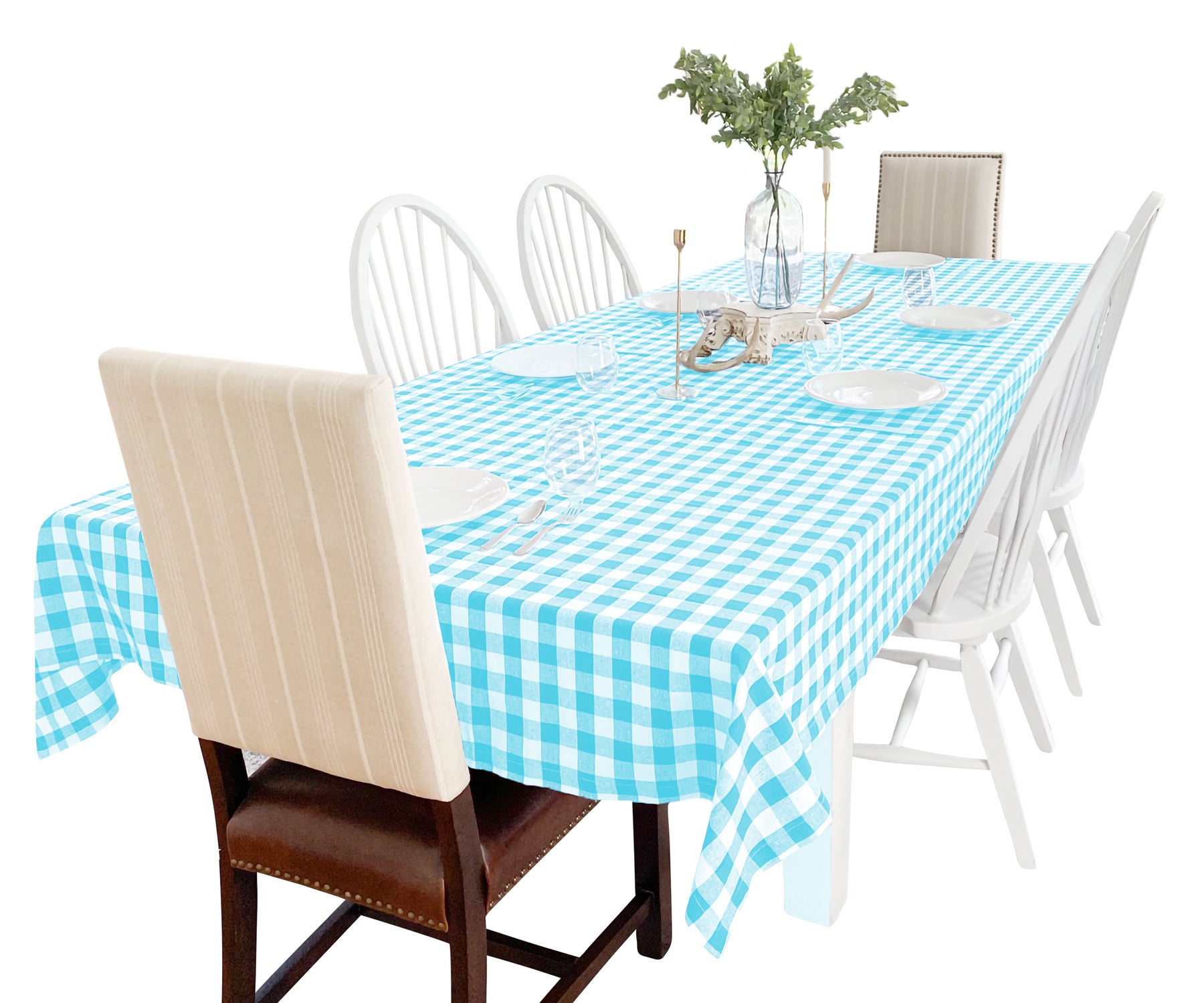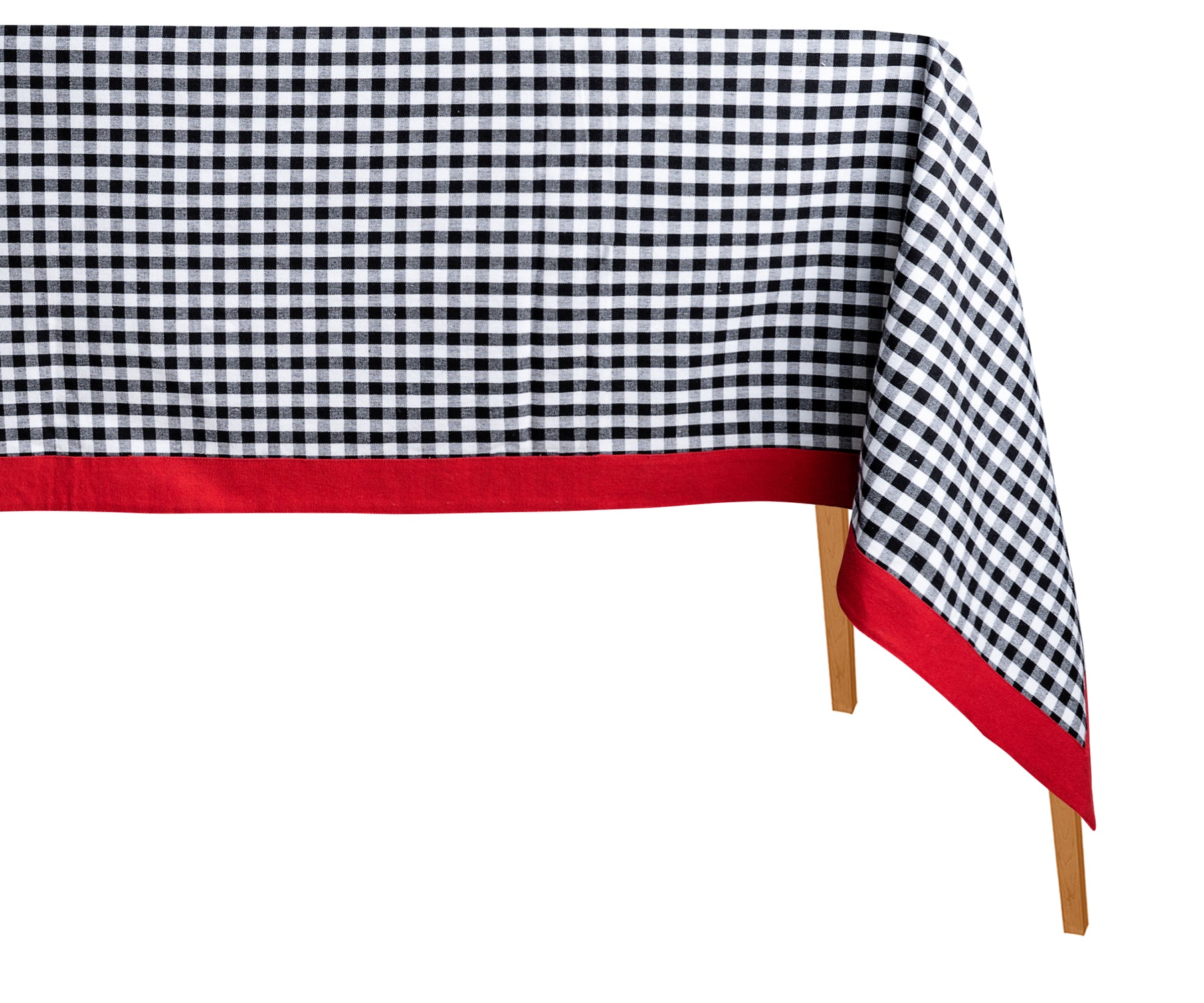Identify the Fabric Before Washing
Before you start cleaning, check the fabric type and care label. Every fabric reacts differently to water and detergent.
Here’s a quick guide:
-
Cotton: Soft and breathable, cotton tablecloths can usually be machine-washed in warm water.
-
Linen: Needs gentle washing. Use mild detergent and avoid high heat.
-
Polyester: Easy to clean and wrinkle-resistant. Machine-wash on a gentle cycle.
-
Lace or Embroidered Fabric: Hand wash only. Avoid twisting or wringing the fabric.
-
Oilcloth or Vinyl: Just wipe clean with a damp cloth. Never put them in a washing machine.
Knowing your fabric helps you choose the right washing method and prevent damage.
How to Wash Tablecloths
Washing tablecloths the right way keeps them fresh and soft.
Here’s how to do it for different types:
1. Machine Washing
Most cotton and polyester tablecloths are safe for the washing machine.
-
Shake off crumbs and dust before washing.
-
Pre-treat any visible stains with mild stain remover.
-
Use cold or warm water and a gentle detergent.
-
Avoid bleach unless the fabric care label says it’s safe.
-
Wash similar colors together to prevent color bleeding.
Once washed, remove them quickly to reduce wrinkles.
2. Hand Washing
For delicate fabrics like linen or lace, hand washing is best.
-
Fill a bucket or sink with lukewarm water.
-
Add a small amount of gentle detergent.
-
Soak the tablecloth for 10–15 minutes.
-
Gently rub stained spots with your fingers.
-
Rinse well with clean water until all soap is gone.
-
Press gently to remove extra water, don’t wring.
Lay the fabric flat on a towel to air dry.
3. Spot Cleaning
For small stains, you don’t need to wash the whole cloth.
-
Blot the stain immediately with a clean, damp cloth.
-
Use mild soap or vinegar mixed with water.
-
Gently dab (don’t rub) until the stain fades.
-
Rinse and let it air dry.
This method works best for oil, wine, or coffee stains.
How to Dry Tablecloths
Drying plays an important role in keeping your tablecloth in shape.
-
Air Drying: The safest option. Hang the tablecloth on a clothesline or lay it flat to dry.
-
Machine Drying: Use a low heat setting for cotton and polyester. Remove it while slightly damp to reduce wrinkles.
-
Avoid Direct Sunlight: It can fade colors over time, especially on patterned or bright fabrics.
Once dry, iron immediately or fold neatly to prevent creases.
How to Iron and Store Tablecloths
Ironing keeps your tablecloth looking crisp and elegant.
-
Use the right heat setting for your fabric.
-
For cotton and linen, iron while slightly damp.
-
For polyester, use low heat and press gently.
-
Always iron on the wrong side to protect the design.
After ironing, fold the tablecloth neatly or roll it to avoid hard creases. Store it in a cool, dry place away from sunlight and moisture.
You can also hang tablecloths on padded hangers if you have closet space.
How to Remove Stains from Tablecloths
Spills happen, but quick action can save your tablecloth.
Here are some common stain solutions:
-
Wine: Sprinkle salt immediately to absorb liquid, then rinse with cold water.
-
Oil or Grease: Apply cornstarch or baking soda to absorb oil before washing.
-
Coffee or Tea: Dab with white vinegar and warm water.
-
Wax: Let it harden, then scrape gently and cover with a paper towel. Iron over it on low heat to lift the wax.
-
Ink: Use rubbing alcohol on a cotton pad and blot gently.
Always test your cleaning solution on a small area first to avoid discoloration.
Know About: The Ultimate Guide to Choosing the Perfect Tablecloth Size
Caring for Special Fabrics

Linen Tablecloths
Linen is elegant but delicate. Wash in cold water with mild soap. Avoid wringing and let it air dry naturally. Iron while still damp for a smooth finish.
Cotton Tablecloths
Machine-wash in warm water. Use a gentle detergent and avoid overloading the washer. Cotton softens with every wash, giving it a cozy feel.
Polyester Tablecloths
These are low-maintenance. Wash on a gentle cycle with cool water. They dry fast and resist wrinkles, making them great for everyday use.
Lace or Embroidered Tablecloths
Handle them with care. Hand wash in cool water and lay flat to dry. Never twist or stretch delicate threads.
Oilcloth or Vinyl Tablecloths
Wipe with a soft sponge and mild soap. Avoid scrubbing too hard to protect the surface. Keep them away from sharp objects and heat sources.
Everyday Maintenance Tips
-
Shake your tablecloth outside after every meal to remove crumbs.
-
Wipe spills right away to stop stains from setting.
-
Rotate between two or more tablecloths to reduce wear.
-
Iron before use for a neat, fresh look.
-
Store them folded with tissue paper between layers to prevent wrinkles.
These small habits help your tablecloths look new for years.
When to Replace a Tablecloth
Even with good care, tablecloths eventually show signs of wear. Faded colors, frayed edges, or stubborn stains mean it’s time for a new one. Choosing high-quality fabrics like cotton or linen from All Cotton and Linen ensures better durability and longer life.
Read More: Tips for Maintaining Softness and Longevity of Towels
Taking care of your tablecloths is simple when you follow the right steps. Know your fabric, wash gently, and treat stains quickly. With a little attention, your tablecloths will stay clean, soft, and ready for every meal or celebration.
So next time you host a dinner or set your table for breakfast, let your well-kept tablecloth shine; it’s the foundation of every beautiful table setting.



















































































